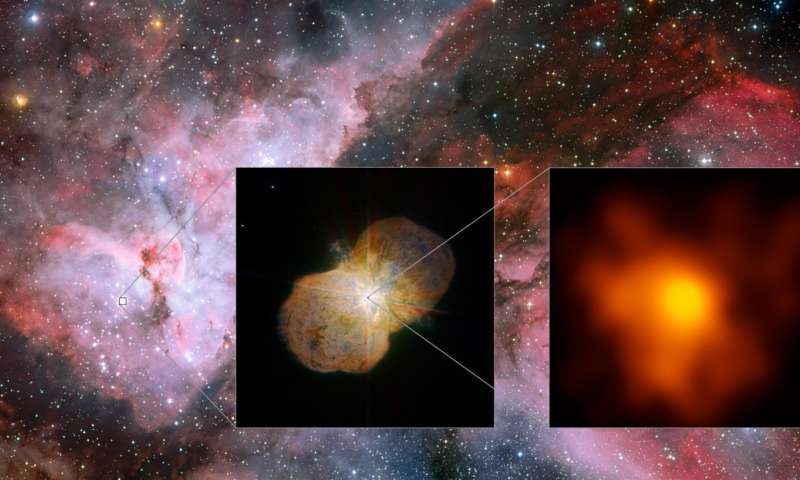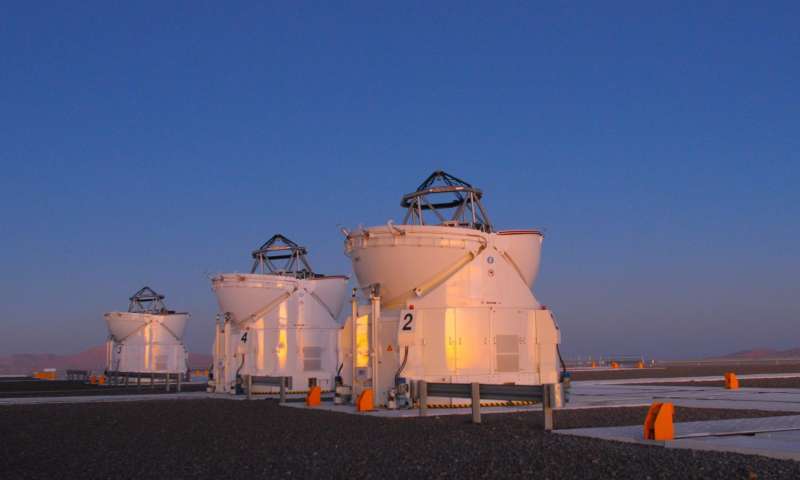
Eta Carinae is a binary star system that’s often called the heavyweight champion of our galaxy. That’s because the two stars, which are 90 times and 30 times more massive than the sun, respectively, shine with the power equivalent to five million suns.
Between the two stars, enormous physical forces are exerted which heat up space and propel solar winds all over the galaxy at tremendous speeds. Case in point, in 1843 Eta Carinae became the brightest star in the southern sky following a series of eruptions. Nothing but superlatives can describe this titanic system and thanks to the combined efforts of four large telescopes we now have the sharpest image of Eta Carinae and the nebula surrounding it.
To make the images, the international team of researchers from Max Planck Institute for Radioastronomy (MPIfR) in Germany, Trinity College Dublin in Ireland, and NASA in the USA, used interferometry. The technique involved combining the infrared light of Eta Carinae by European Southern Observatory (ESO) telescopes to obtain extremely sharp images which would have been very hard to make otherwise. The final images are equivalent to those taken by a giant 130-metre telescope.

“These are unprecedented images obtained with the ESO telescopes. We were able to zoom in and see the heavyweight champion in our Galaxy like never before. The images provide us with a front-row view of how monster stars interact with each other. The heavier star is winning for now, but the faster companion star may change the fate of the system in the future,” said Jose Groh, who is a Professor of Astrophysics at Trinity College Dublin.
Besides unprecedented glimpses into the heart of Eta Carinae and the Homunculus nebula which surrounds it, the latest findings add further weight to the binary system’s reputation. As the two giant stars circle each other, solar winds collide violently a speed of 10,000,000 km/h. These sort of violent outflowing winds are typical of dying stars which are ready to go out with a bang by becoming supernovae.
Who knows, it might have already happened since the binary system is 7,500 light-years away. The impending flash of light that will brighten the night’s sky might reach us later in a thousand years, next month or a couple of minutes from now.
One thing’s for sure, it’s going to be one heck of a show once it happens.
“Our dreams came true, because we can now get extremely sharp images in the infrared regime. The ESO interferometer provides us with a unique opportunity to improve our physical understanding of Eta Carinae and many other monster objects,” said the researchers who published their work in the journal Astronomy & Astrophysics.






